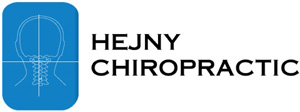 Knowledge is a critical factor toward managing any condition. Vertigo and balance disorders are no different. They are hard to treat without ample information about them. To add to the five interesting vertigo facts I have shared in the past, here are more important things to know about spinning and the vestibular system. Read until the end to learn how a Minnesota vertigo chiropractor like me can provide natural therapy to combat vertigo.
Knowledge is a critical factor toward managing any condition. Vertigo and balance disorders are no different. They are hard to treat without ample information about them. To add to the five interesting vertigo facts I have shared in the past, here are more important things to know about spinning and the vestibular system. Read until the end to learn how a Minnesota vertigo chiropractor like me can provide natural therapy to combat vertigo.
Table of Contents
1. Vestibular Dysfunction Is One of the Most Common Conditions
Vertigo is common. As many as 69 million people in the United States have dealt with spinning. That makes it one of the most common symptoms of a condition. People over the age of 40 have a higher chance of experiencing dizziness and balance problems.
2. The Body Depends on Different Sources to Keep Your Balance
The brain receives messages from different parts of the body. For example, the ears, eyes, and various parts of the musculoskeletal system give sensory information to the brain. The vestibular system, which includes the inner ear, is responsible for the body’s balance.
3. Many Issues Can Affect the Vestibular System
While spinning often originates in the vestibular system, the cause can be different issues. Vertigo can be due to autoimmune problems, medication issues, and even trauma. Peripheral vertigo is the type of vertigo that stems from the vestibular system.
4. Cognitive Issues Can Accompany Vestibular Problems
Brain fog is also common in people who experience vertigo. It is a cognitive dysfunction that involves memory problems, poor concentration, inability to focus, and poor concentration. Some people who experience balance problems and cognitive decline blame aging for their symptoms. Little do they know they are experiencing an underlying condition that in most cases is a correctable issue.
5. Vertigo Involves Other Symptoms
Besides the false sensation of spinning, vertigo patients may also experience vision problems, fatigue, hearing loss, tinnitus (ringing in the ears), nausea and vomiting, to name a few. Next time you visit your family doctor, be sure to share the other symptoms you experience as they are essential to your diagnosis.
To learn more about the connection between head and neck injuries and vertigo, download our complimentary e-book by clicking the image below.
6. There Are No Outward Signs of Vertigo
As a result, people may think you are faking it. You basically look fine on the outside, so people may doubt your internal struggles. Unfortunately, there is an attached stigma to vertigo which leads some patients to avoid searching for appropriate relief care. Vertigo is a real, debilitating symptom. One bad fall during an attack is all it takes to bring about serious injuries or even death; that’s why it is important to consult a doctor for help.
7. CNS Problems Can Also Cause Vertigo
Vertigo that stems from the central nervous system is called central vertigo. Central vertigo involves problems in the brain, and there’s no single cause for it. It can be due to neurological disorders such as migraines or multiple sclerosis. It can also be due to injuries in the head or neck.
8. NASA Led a Vertigo Research Study
NASA did not just take the lead in the future of space travel. They led one of the earliest vertigo studies. It involved their astronauts returning to earth. NASA has made significant contributions to space exploration and the medical field.
9. Vertigo Support Groups Are Out There
Due to the stigma around vertigo, many support groups have emerged online where people can share their experiences and concerns with others who are also going through the same issues. Just keep in mind that support groups are for emotional support, not for medical advice.
10. Upper Cervical Chiropractic Can Bring Relief
Many patients in case studies have benefited and achieved dramatic improvements after receiving upper cervical chiropractic care. Why is this the case? First of all, the upper cervical spine enables movements of the head. The C1 and C2 vertebrae provide this range of movement. However, they are susceptible to misalignments.
Second, a slight misalignment of these bones can have far-reaching effects on the whole body. The C1 and C2 vertebrae protect the brainstem, which facilitates blood flow to the brain. Reduction of blood flow is very likely once a subluxation exists. A misalignment can cause a lesion to form on the Eustachian tubes over time, and it can affect how the ears drain fluid. Vertigo can ensue if there is excessive fluid in the ears.
For these reasons, it makes sense to turn to upper cervical chiropractic care. If you wonder how upper cervical chiropractic differs from general chiropractic, here are a few pointers.
Safe Corrections
Upper cervical doctors use low force in adjusting the bones; there is no cracking or popping of the spine. This makes the method a safe option for patients of all ages, including very young to the very old.
Long-Lasting Effects
Since adjustments are gentle, they last longer. This is a major reason why upper cervical chiropractic care is a cost-effective form of therapy. In the beginning, you may need weekly visits. But once adjustments start to stay in place longer as your body continues to heal, you can space your chiropractor visits further apart.
As-Needed Adjustments
Upper cervical chiropractors only perform necessary adjustments. If you don’t have any misalignment, you won’t be given adjustments. Once your vertebrae are holding in place, your upper cervical doctor will let you leave without any corrections.
If you suffer from dizziness, you may schedule an appointment with Hejny Chiropractic in Spring Lake Park, Minnesota, through the contact form.
To schedule a complimentary consultation with Dr. Hejny, call our Spring Lake Park office at 763-230-0116. You can also click the button below.
 If you are outside of the local area, you can find an Upper Cervical Doctor near you at www.uppercervicalawareness.com.
If you are outside of the local area, you can find an Upper Cervical Doctor near you at www.uppercervicalawareness.com.
